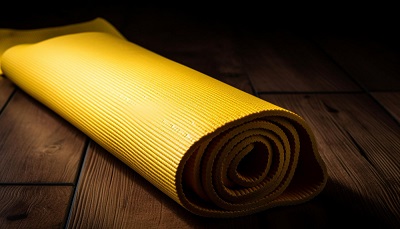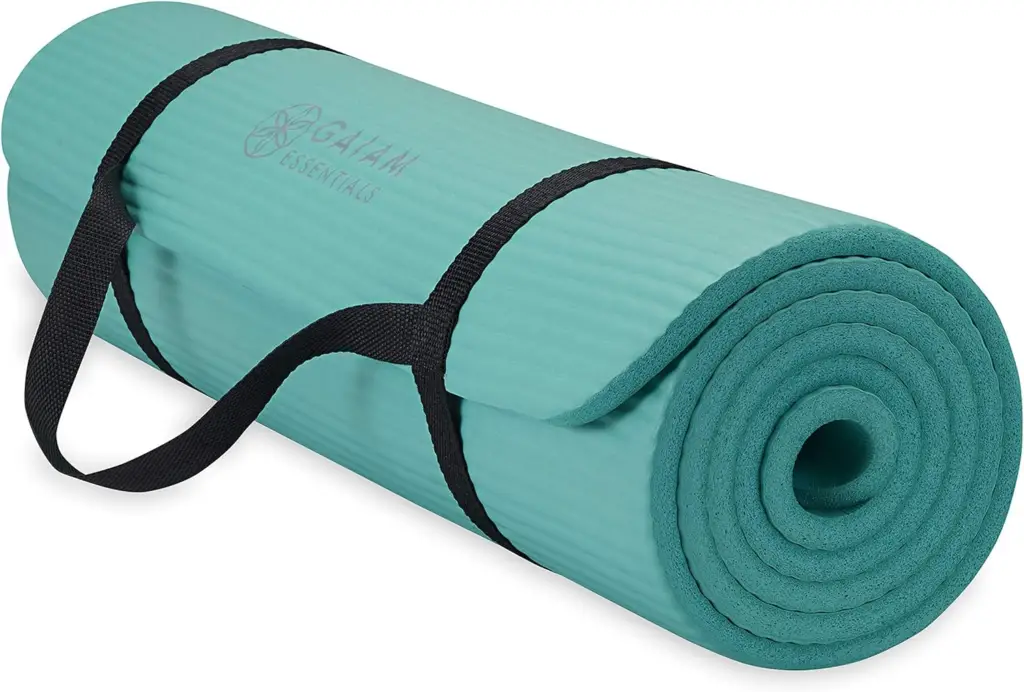Table of Contents Show
As a yoga enthusiast, you might have wondered whether your yoga mat is waterproof or not. You may have also faced this question when shopping for a yoga mat, especially if you plan to take it outdoors. In this article, we will dive deep into this topic and answer all the questions you have been curious about.
To start, let’s answer the big question: is a yoga mat waterproof? The answer is that it depends on the material. Some yoga mats are waterproof, while others are not. The most common material for yoga mats is PVC, which is a plastic-based material. PVC yoga mats are not waterproof, but they do have some water-resistant properties.
Disclosure: As an Amazon Associate I earn from qualifying purchases.
If you’re looking for a waterproof yoga mat, you should consider purchasing a mat made of rubber, neoprene, or polyurethane. These materials are known for their water-resistant properties and can protect your mat from water damage. Moreover, these materials provide a better grip and are more durable than PVC mats.
Now, let’s dive deeper into each material and how they fare in terms of waterproofness.
Rubber Yoga Mats:
Rubber yoga mats are made of natural or synthetic rubber. They are waterproof and resistant to water damage. Rubber is an excellent material for yoga mats because it provides a good grip, and it’s environmentally friendly. Moreover, rubber mats are easy to clean, and you can use them both indoors and outdoors.
However, there are some downsides to rubber mats. They tend to be heavier than other materials, which makes them less portable. Also, some people are allergic to rubber, so it’s essential to check if you have any allergies before purchasing a rubber mat.
Neoprene Yoga Mats:
Neoprene is a synthetic rubber-like material that is known for its waterproofness. Neoprene yoga mats are popular among people who practice hot yoga or Bikram yoga because they absorb sweat and provide excellent traction. Additionally, neoprene mats are easy to clean and come in a variety of colors and patterns.
Polyurethane Yoga Mats:
Polyurethane yoga mats are made of a synthetic material that is waterproof and durable. These mats are lightweight and portable, which makes them ideal for travel or outdoor yoga sessions. Moreover, polyurethane mats provide an excellent grip, and they are easy to clean.
However, polyurethane mats can be expensive, and some people may find the material to be too slippery, especially if their hands are sweaty.
Now that we’ve discussed the different materials let’s talk about how to take care of your yoga mat.
Taking Care of Your Yoga Mat
Regardless of whether your yoga mat is waterproof or not, it’s essential to take proper care of it to ensure its longevity. Here are some tips for taking care of your yoga mat:
- Clean your mat regularly: Use a mild soap and water solution to clean your mat after each use. Avoid using harsh chemicals or abrasives that can damage the mat’s surface.
- Air dry your mat: Allow your mat to air dry completely before rolling it up or using it again. Avoid exposing your mat to direct sunlight or high temperatures, which can cause it to warp or degrade.
- Store your mat properly: Store your mat in a cool, dry place away from direct sunlight and moisture. Avoid folding your mat, as this can cause permanent creases or damage to the material.
- Use a yoga towel: Consider using a yoga towel on top of your mat, especially if you practice hot yoga or sweat a lot. A yoga towel can absorb moisture and prevent slipping, which can extend the life of your mat.
- Replace your mat when necessary: Over time, your yoga mat may become worn out or lose its grip.
Conclusion
In conclusion, having a waterproof yoga mat can be essential for yogis who want to practice outdoors or in hot environments. The article explains that while some materials used in yoga mats are more water-resistant than others, PVC and rubber mats are the best options for those who prioritize waterproofing. It is important to note that having a waterproof mat can also make cleaning and maintenance easier. Overall, for those seeking to enhance their yoga experience with a waterproof mat, it is recommended to choose one made of PVC or rubber.
You May Also Like: Discover the Top 7 Waterproof Mats for Ultimate Protection!
Frequently Asked Questions
Q1: Is a yoga mat waterproof?
A1: No, most standard yoga mats are not waterproof. They are typically made of materials like rubber, PVC, or foam, which are porous and can absorb moisture.
Q2: Can I use a waterproof yoga mat outdoors?
A2: While waterproof yoga mats are available, they are less common than regular mats. If you plan to practice yoga outdoors, it’s generally recommended to use a mat designed specifically for outdoor use, such as a durable and weather-resistant mat. Regular waterproof mats may not provide the necessary grip and support on outdoor surfaces.
Q3: How can I protect my yoga mat from water damage?
A3: If you want to protect your yoga mat from water damage, you can consider using a mat towel or a waterproof mat cover. Mat towels are absorbent and can be placed on top of your mat to absorb sweat or moisture. Waterproof mat covers are designed to keep your mat dry and can be used during outdoor practices or in humid environments.
Q4: What should I do if my yoga mat gets wet?
A4: If your yoga mat gets wet, it’s important to dry it properly to prevent mold and mildew growth. Wipe off any excess moisture using a towel or absorbent cloth. Hang the mat or lay it flat in a well-ventilated area to air dry completely before rolling it up for storage.
You May Also Like: The Ultimate Water Resistant Yoga Mat Bag: 13 Groundbreaking Features for A Holistic Affair
Q5: Are there any waterproof alternatives to traditional yoga mats?
A5: Yes, there are alternative options to traditional yoga mats that offer waterproof properties. Some examples include cork yoga mats, which have natural water-resistant qualities, or mats made from synthetic materials like TPE (Thermoplastic Elastomer), which can be more resistant to moisture absorption compared to standard mats. It’s always best to check the product specifications to ensure the mat is indeed waterproof.


